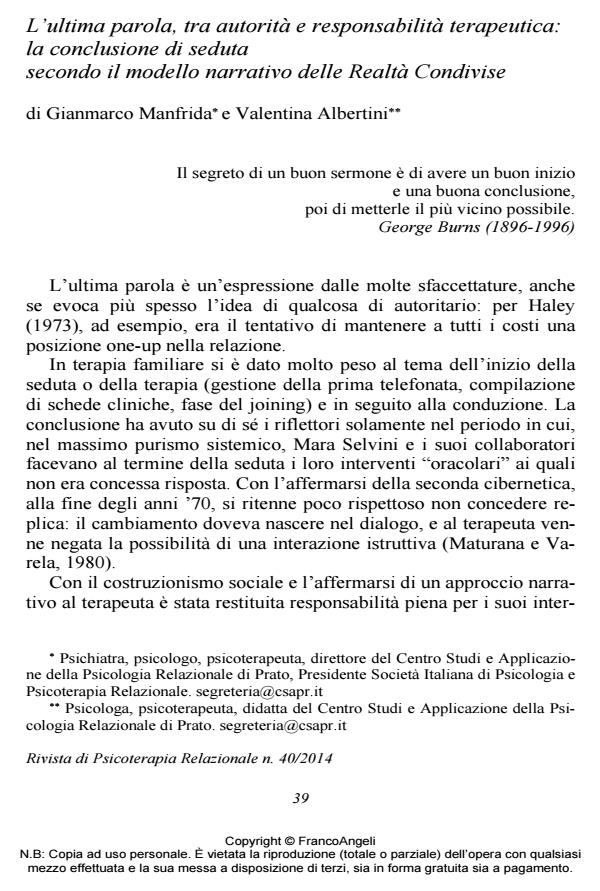The last word, between therapeutic authority and responsibility: conclusive interventions according to the narrative Shared Reality Model
Journal title RIVISTA DI PSICOTERAPIA RELAZIONALE
Author/s Gianmarco Manfrida, Valentina Albertini
Publishing Year 2015 Issue 2014/40
Language Italian Pages 18 P. 39-56 File size 68 KB
DOI 10.3280/PR2014-040003
DOI is like a bar code for intellectual property: to have more infomation
click here
Below, you can see the article first page
If you want to buy this article in PDF format, you can do it, following the instructions to buy download credits

FrancoAngeli is member of Publishers International Linking Association, Inc (PILA), a not-for-profit association which run the CrossRef service enabling links to and from online scholarly content.
Constructivist therapists considered therapy a conversation where they might be catalysts of change, but could not induce it, and it became much rarer that therapists concluded sessions with specifically designed interventions. The authors report some final interventions addressed to couples, families, individuals and therapists in supervision in order to revalue this technique according to the socio-constructionist narrative Shared Reality Model. Final interventions can be a persuasive instrument of change when well structured and appealing to the specificities of each client’s and family’s story and therapeutic process.
Keywords: Conclusive interventions, Shared Reality Model, end of therapeutic session, persuasive reasoning, end of sessions texts.
Gianmarco Manfrida, Valentina Albertini, L’ultima parola, tra autorità e responsabilità terapeutica: la conclusione di seduta secondo il modello narrativo delle Realtà Condivise in "RIVISTA DI PSICOTERAPIA RELAZIONALE " 40/2014, pp 39-56, DOI: 10.3280/PR2014-040003